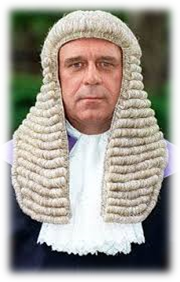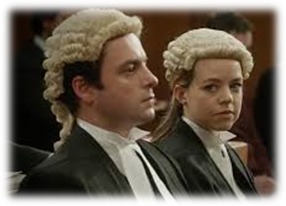(Everything you wanted to know about Judge Wigs but were afraid to ask)
Sometimes, it is hard not to let the power of my position as a judge go to my head. That is a common temptation among judges. When we are appointed, we often think we are anointed. As a judge:

- I win all the arguments.
- I always get the last word.
- Everyone laughs at my jokes.
- Unlike at home, I get treated with great respect — often too much respect.
So, my children have dedicated their lives to trying to keep me grounded and humble. They don’t laugh at my jokes. They treat me like dirt. And they even have their own titles and references for me.
- “He thinks he’s a big cheese.” (Referring to my feelings of self-importance.)
- “He’s just a big ham.” (Referring to my being the center of attraction.)
- “He is a big ham and cheese.” (Referring to both the above.)
- “His Immenseness.” (Referring to my ego and my girth.)
I have lectured my kids that the one proper title/reference is “Big Wig.”

In the English courts, the judges and barristers/lawyers wear wigs. The barristers use small short wigs, but the judges wear the long big wigs. Thus, the origin of the phrase, “He’s a big wig.”
I always thought the judges’ big wigs looked cool. One Halloween, after making sure I wasn’t violating any court rules, I wore a costume big judge’s wig on the bench.
I changed my mind about the “coolness” of the big wigs after talking to an English judge. “They are a bloody nuisance!”
He explained that they are made out of horse hair, and they are very expensive. The judge’s big wigs cost over $3,000. The barrister wigs cost a mere $500.

The English judge said the big wigs are hot and sweaty. After a few days they smell. Disgusting! “Can you imagine putting that hot smelly thing on your sweaty head all day every day?” he asked. So, the judges are forced to buy several wigs, and to have them cleaned frequently, all at great expense.
The judge explained that the situation was worse historically. “The wigs were originally made from human hair taken from corpses.” Yuk!
Gratefully, we American judges do not wear wigs.
The story is told that Thomas Jefferson and John Adams argued over the attire of American judges. Adams, a traditionalist and Anglophile, wanted American judges to continue wearing robes and wigs just like their English counterparts. Jefferson, an advocate of modest republican citizenship and a Francophile, argued against “needless official apparel.” He adamantly opposed “the monstrous wig which makes the English judges look like rats peeping through bunches of oakum.”
They reached a compromise. American judges would wear robes, but not wigs.
Thanks goodness!
(See: “Judges,” “Court Dress,” Wikipedia.)
http://www.londonedition.net
Friday = Court Cases
Sunday = Religion/Church History
Tuesday = American & World History/Literature

This is just fascinating! And as usual, so delightfully well-written.
LikeLike
Thanks. Fun stuff.
LikeLike